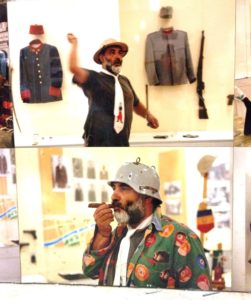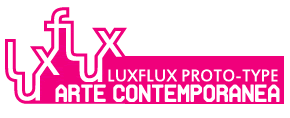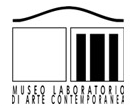 |
Jusuf Hadžifejzović, Giorgio Morandi Department Store, galleria Duplex100m2, Sarajevo. 2015. ©Pierre Courtin.
Jusuf Hadžifejzović impedito a ritirare le sue opere presso il suo spazio espositivo CHARLAMA realizzato nel grande magazzino SKENDERIA, ha portato da casa confezioni di sigarette, medicine, cibo, bottiglie di plastica, di profumo, di shampoo e così via, presso la galleria Duplex100m2 di Pierre Courtin a Sarajevo. Il tutto è stato esposto su mensole bianche, come in un supermercato. Richiamandosi alle nature morte di Morandi, l’artista ha esposto i suoi oggetti più intimi, attraverso i quali è possibile ricostruire la sua quotidianità: quante e quali sigarette ha fumato, qual è il suo shampoo preferito, quali medicine deve prendere, quante bottiglie di birra consuma e così via. Senza pudore, […] l’artista ha esposto se stesso e la sua vita. Il visitatore è invitato ad acquistare quegli oggetti, allo stesso prezzo pagato dall’artista, che con i soldi ottenuti dalla vendita andrà a ricomprare la stessa confezione, promuovendo così un ciclo di scambio-vendita, un mercato dell’arte legato a prezzi “veri”, che corrispondono all’effettivo valore dell’opera”. (https://www.artribune.com/professioni-e-professionisti/who-is-who/2015/04/charlama-o-come-difficile-fare-arte-in-bosnia/).
**Jusuf Hadžifejzović è uno degli artisti più importanti e influenti sulla scena dell’arte contemporanea bosniaca. Nato in Serbia nel 1956, studia all’Accademia di Belle Arti di Belgrado, e nel 1980 è invitato da Klaus Rinke a Düsseldorf, dove conoscerà Joseph Beuys e dove risiede per due anni. Dal suo ritorno in Jugoslavia collabora con lo spazio espositivo del Collegium Artistico, presso il quale invita moltissimi artisti Jugoslavi ed europei e dove realizza due mitiche mostre nel 1987 e nel1989: “Documenti Jugoslavi”. Vissuto alcuni anni in Belgio, durante la guerra fratricida nella ex Jugoslavia (1992-1995) decide di ritornare a Sarajevo, dove realizza importanti mostre per ricompattare artisti, intellettuali e amici provenienti da tutte le regioni in guerra della ex Jugoslavia. Il suo progetto di una “Accademia senza pareti” si sostanzia della messa in opera d’arte degli scarti consumistici della vita quotidiana. Tra le sue mostre e performance più interessanti, ricordiamo nel 2009/2010 a Roma, nel Museo Laboratorio di Arte Contemporanea della Sapienza “DEPOTGRAPHIA ROMA”, e nel 2015 presso la galleria Duplex100m2 di Pierre Courtin a Sarajevo “GIORGIO MORANDI.”.
Riferimenti: Nell’ambito della mostra “DepotgraphiaRoma”, intervista di Federica Beybel e Serena Marchionne a Jusuf Hadžifejzović : “Testimonianza Silente di un Rimosso Collettivo”, in luxflux.net, n.37, 2009 (http://www.luxflux.net/depotgraphia-roma-testimonianza-silente-di-un-rimosso-collettivo/)
Sull’artista, Simonetta Lux, Arte Ipercontemporanea. Un certo loro sguardo, Gangemi, Roma, 2006, Jusuf Hadžifejzović. Riedizione del dolore. Smorfie e tracce per i luoghi misteriosi della politica, pp.321-335.
Interview by Simonetta Lux with Stella Santacatterina
Open to the public from Saturday May 11th to Sunday November 24th 2019, at the Giardini and the Arsenale, the 58th International Art Exhibition, titled May You Live in Interesting Times, will be curated by Ralph Rugoff and organized by La Biennale di Venezia chaired by Paolo Baratta. The pre-opening will take place on May 8th, 9th and 10th, the awards ceremony and inauguration will be held on Saturday May 11th 2019.
S.L. What are your expectations regarding the 58th art biennial, given the peculiar ambiguity of the title “may you live in interesting times”?
S.S. Doubtless these are threatening and declining times. An art system made up of many worlds where confusion often reigns rather than cohesion and dialogue.
The western aesthetic debate appears to be obsolete and this global art world still follows a logic of the market. The new worlds of art (as we have already seen) are welcomed but always within the old and increasingly powerful market logic. Any art proposition which strays from this logic, it is difficult to trace it. The artists themselves who are resistant to this logic, so to speak, have difficulty meeting each other and even to be heard.
As far as our menacing and chaotic time is concerned, I would expect the artists to take a critical and at the same time hopeful look with respect to the world around us: in short, let us see that there is a vanishing point towards an unthought of future art, and a chance to change again. Art must not pursue catastrophe, but instead envisage other systems of life.
SL Did this mean Paolo Baratta at the recent press conference? Conformism and fear, of which he speaks, as well as the simplifying tendency (peculiar in the social media millennial addicts), are today in your view extraneous attitudes to artists? more to old or new generations? Does your life in London give you a special perspective?
SS No, this is not the question. Conformism and fear are always foreign to art and artists: these are attitudes from which the artist always shuns. Conformism at all levels is the sworn enemy of “thinking” and therefore of art.
SL Is it enough to be a spectator?
SS Today we are passive spectators most of the time. I think instead that the space of art, should be interactive, a stimulus , in order to make us think with a different perspective from that known, perhaps with a sense of arrest and surprise, to make us think about and question experiences and knowledge already acquired. Art should not limit itself just to embracing the viewer.
SL Do you mean that the public or the so-called spectator, seem not to be summoned to an agora, where to take the floor? So many times we have the impression of being in a great complex and extraordinary show, of assisting, without realizing that we are something more than an audience, subjects “in danger?” For example? Without being, people in question?
SS In the last twenty years in the art world, even in large European cities the famous art openings in private galleries are organized as an event, where the spectator is invited to a piece of this show. The long lines you have to undergo in order to gain access makes you think of a unique and important event, but in reality what happens is the impossibility to dwell on the work itself and even less to establish any kind of relationship. These days when I’m really interested in the work of an artist, I avoid these openings, which are calculated and manipulated exclusively to prevent the use of art. The event ends with the event itself.
SL I have always been as surprised as you are of what you are telling me, and I would like to mistake it for an imaginative and imaginary attraction, for something extraordinary and that would have to do with freedom, intelligence and beauty (maybe an idea of beauty that no longer exists or has radically changed). I still believe it. But I also want to tell you that a well-known artist in Europe, Jusuf Hadžifejzović, who lives in Sarajevo, where the situation is always culturally depressed, well: he said that in his city everyone knew that he was an artist, good, but nobody knew that what did he do.
SS This is customary today
SL But also the ambiguity and complexity.
SS It is not the artist who is responsible, but the very circuit of art that the artist cannot control. What plays, what attracts is all that is staged as a show; the quantity more than the quality. The extended public is attracted, and almost always remains with the usual idea of “I was there too”.
SL Do you think that the project of the director of the Biennale Ralph Rugoff, with his affirmation that “art does not exercise its forces in the domain of politics”, can then attribute to art the role of a sort of guide on how to live and think in “interesting times”? What politics does he talk about?
SS If we talk about political politics, art can only be a stranger. But art is political, in the high sense of the term, in the sense of free action in the polis. I hope that the premises declared by Rugoff are fulfilled. Let it be given an alternative space, were we can be surprised by new points of view. That art is seen in its true nature, which is an enriching experience, where the I gives a way to We.
SL I await your report. We will consult each other again after the exhibition opening in Venice.
* Stella Santacatterina, a well known critic and art historian, lives in London.
From this number is our international correspondent.


